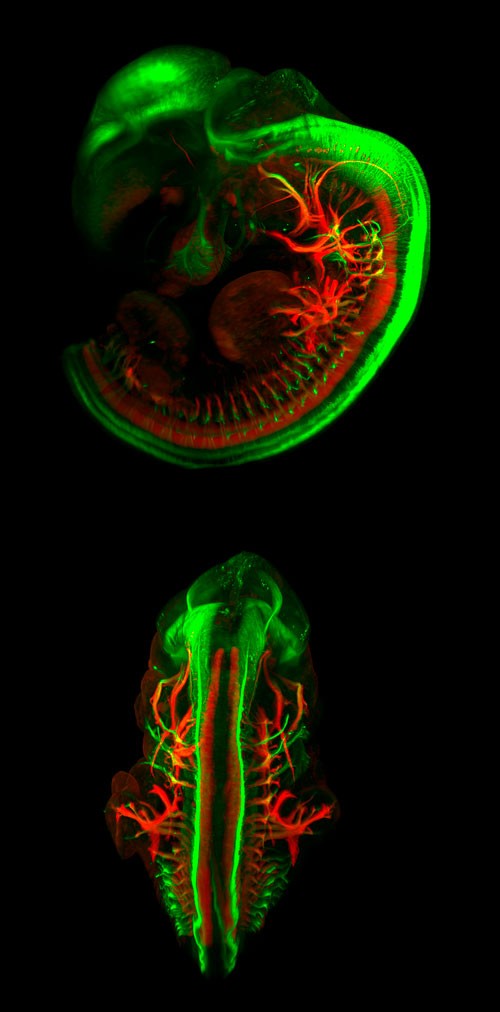Speed
In general, all commercial flat light microscopy setups can be divided into three broad categories:
A
Volume image data in SPIM can be recorded by scanning the object through the stationary light sheet and aligned focal plane of the detection objective.
B
Alternatively the light sheet can be scanned through the static sample by synchronized repositioning of the focal plane and the detection lens.
C
Same as above, the light sheet is scanned through the sample by synchronized adjustment of the focal plane by a tunable lens to image the illuminated plane onto the camera.
Most manufacturers use the first configuration (a) because it is the simplest technologically and it is the one included in the Zeiss patent. Our configuration is the last one (c) and allows 3D imaging without moving the either sample or the objective: we move the light sheet through a galvanometric mirror and the focal plane of detection with the help of an optoelectrical lens. That makes our system the fastest light sheet microscope on the market. Given the same camera reading speed, exposition time and number of stacks, the difference in measurement time depends on how fast the system goes from one plane (z) to the next. In our QLS-Scope this takes only 7ms. That equips us with a great speed of image capture.
For clarified fixed large samples, speed is important for two reasons. The first is that if you are looking for either a larger field of view (stitching), a better spatial resolution (x-sweep), isotropic resolution through angular measurements (2, 4 or 500), or just to avoid photobleaching, you need a very high measuring speed. Our QLS-Scope has three ways of measuring:
- Z motor: the sample moves through a fixed light sheet and a focal plane. Much like the way Bruker or Zeiss setups works
- Qscope: the light sheet is scanned with galvo mirrors synchronously with the detection plane, scanned with a tunable lens.
- Qscan: Same as above but without a live image of the experiment. This is the fastest imaging mode available and is used in our SPOT (SPIM-OPT) technology.
As an example, for an 8mm sample and 800 Z planes, our measurement times are:

- Z Motor: Approx. 10 minutes (www.youtube.com/watch?v=GL5Bdikv1gA)
2. Qscope: 45 seconds (www.youtube.com/watch?v=4fJWpvgj4lA)
3. Qscan: 20 seconds (www.youtube.com/watch?v=FxtdooNJOGU)
Secondly, speed is very important in live samples. In the following link you can see an example of a zebrafish heart measurement in-vivo:
While other manufacturers demonstrate videos with the fish’s heart beating in a single plane, our very fast technology can produce a 3D image for each heartbeat. By making time lapse measurements in, we can create 3D fluorescence images of the beating heart. We also show that image speed is essential when you need to follow the movement of a cell in z (3D), within a living organism.
Speed is especially relevant for researchers working on the detection of dynamic phenomena in living specimens. In the video link below, you can see how our technology helped the first ever detection of the migration of proepicardium cells for the formation of the epicardium tissue on a live zebrafish: